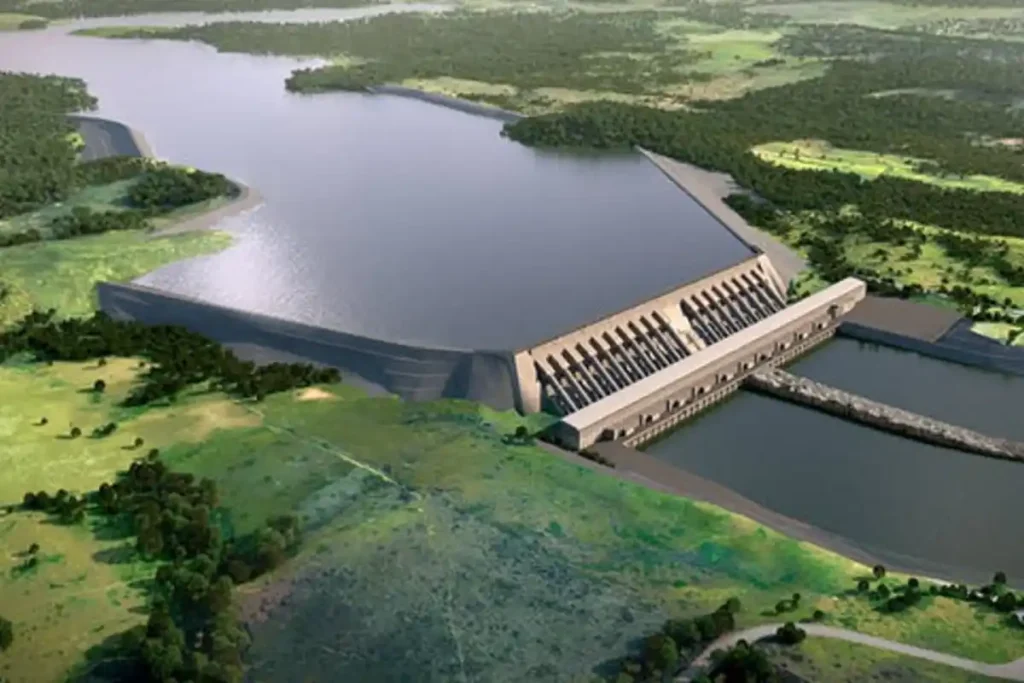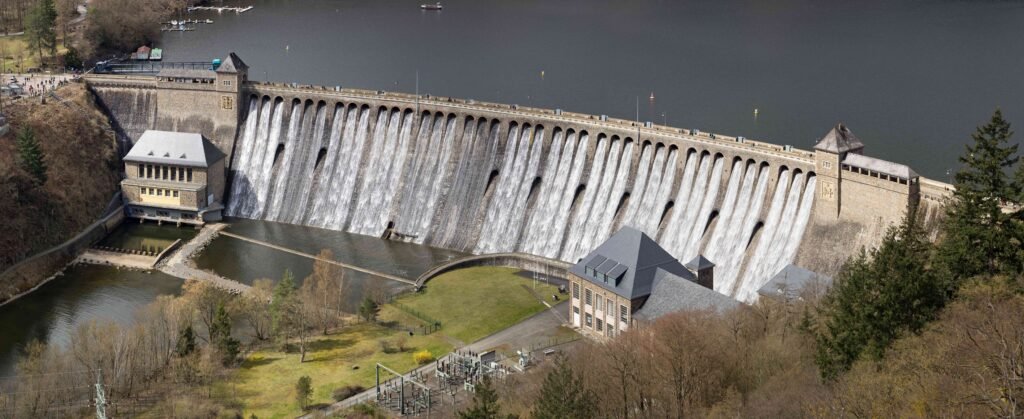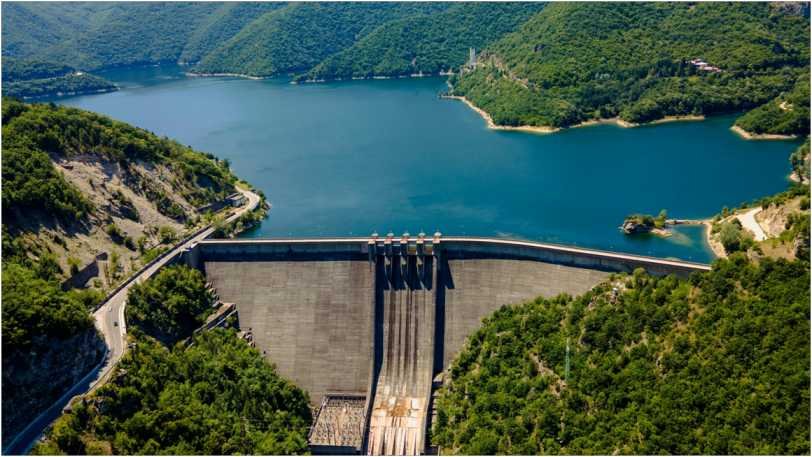Introduction
Dams have stood as symbols of human engineering excellence for centuries. These massive structures hold back water, control floods, generate electricity, and ensure irrigation for agriculture. In India, dams are not just utility structures; they are lifelines for millions, influencing agriculture, power generation, and regional development. Over the years, dam engineering has evolved from simple stone barriers to complex concrete and earthen structures designed to last for decades under extreme conditions.
This article provides a detailed understanding of dams in construction engineering, their history, types, functions, design considerations, and importance, with a focus on Indian dam projects.
Historical Evolution of Dams

The concept of dams is not new. Ancient civilizations like Mesopotamia, Egypt, and the Indus Valley used basic barriers to store water for irrigation. In India, structures like the Kallanai Dam in Tamil Nadu, built around 2nd century AD, still stand as evidence of early civil engineering skills.
Modern dams use advanced construction materials like reinforced concrete, pre-stressed concrete, and roller-compacted concrete, along with computer-aided design for maximum efficiency and safety.
Functions of a Dam in Civil Engineering
Dams serve multiple purposes in construction and infrastructure development:
| Function | Description |
|---|---|
| Water Storage | For irrigation, drinking water, and industrial use. |
| Flood Control | Regulates river flow to prevent damage during heavy rains. |
| Hydroelectric Power Generation | Uses water flow to generate clean electricity. |
| Irrigation | Ensures year-round agricultural productivity. |
| Navigation | Maintains water levels for boat and ship movement. |
| Recreation | Supports tourism, fishing, and water sports. |
Also Read Difference Between Truss and Frame in Construction: A Complete Guide
Types of Dams
Dams can be classified based on their structure, material, and purpose.
1. Based on Structure and Design
- Gravity Dams – Made from concrete or masonry; resist water pressure using their own weight.
- Arch Dams – Curved design, transfers water pressure to valley walls.
- Buttress Dams – Supported by triangular buttresses to withstand water force.
2. Based on Construction Material
- Earthen Dams – Built with compacted soil and clay.
- Rock-fill Dams – Made from rocks and boulders, with impermeable core.
- Concrete Dams – Strong and durable, suitable for high water storage.
3. Based on Purpose
- Storage Dams – For irrigation and drinking water.
- Diversion Dams – Redirect water flow for canals or irrigation.
- Detention Dams – Reduce flood risk by temporarily storing excess water.
Major Dams in India – Engineering Marvels
| Dam Name | State | River | Type | Purpose |
|---|---|---|---|---|
| Bhakra Nangal | Himachal Pradesh & Punjab | Sutlej | Concrete Gravity | Irrigation & Power |
| Sardar Sarovar | Gujarat | Narmada | Concrete Gravity | Irrigation & Power |
| Hirakud | Odisha | Mahanadi | Earthen with Concrete | Flood Control & Irrigation |
| Tehri | Uttarakhand | Bhagirathi | Rock & Earth-fill | Power & Water Supply |
| Nagarjuna Sagar | Telangana | Krishna | Masonry | Irrigation & Power |

Construction Process of a Dam
Building a dam requires extensive planning and design in civil engineering:
- Site Selection – Based on topography, geology, and hydrology.
- Design Phase – Structural design, spillway design, and safety measures.
- Foundation Preparation – Excavation and removal of weak soil.
- Dam Body Construction – Layered placement of concrete or earth material.
- Installation of Gates and Spillways – For water release and flood control.
- Testing and Commissioning – Ensuring strength, leakage prevention, and operational readiness.
Engineering Challenges in Dam Construction
- Seismic Risks – Dams in earthquake zones require special design features.
- Sedimentation – Reduces storage capacity over time.
- Environmental Concerns – Impacts ecosystems and local communities.
- High Construction Costs – Requires government and private investment.
Advantages of Dams
- Provide sustainable water supply.
- Generate renewable hydroelectric power.
- Help in flood control and disaster management.
- Support agricultural productivity through irrigation.
Disadvantages of Dams
- Displacement of local populations.
- Submergence of forests and agricultural land.
- Risk of dam failure during extreme floods or earthquakes.
- High maintenance costs.
Environmental and Social Considerations
Modern dam projects in India undergo Environmental Impact Assessment (EIA) to minimize ecological damage. Efforts are made to relocate affected communities, restore forests, and ensure aquatic life protection.
Future of Dam Engineering in India
India is investing in smart dam technology with automated gates, sediment management systems, and real-time monitoring to improve efficiency and safety. The focus is also shifting towards multipurpose dams that balance power generation, irrigation, and environmental conservation.
FAQs on Dams in Construction Engineering
Q1. What is the main purpose of a dam in India?
The main purpose is water storage, power generation, irrigation, and flood control.
Q2. Which is the largest dam in India?
The Tehri Dam in Uttarakhand is the tallest, while Hirakud Dam in Odisha is one of the longest.
Q3. How long can a dam last?
With proper maintenance, a dam can last over 100 years.
Q4. What materials are used in dam construction?
Concrete, masonry, earth, and rock materials are commonly used.
Q5. Are dams safe during earthquakes?
Modern dams are designed to withstand seismic forces, but safety checks are crucial.
Conclusion
Dams are a cornerstone of infrastructure development in India, combining civil engineering excellence with socio-economic benefits. They ensure a reliable water supply, control floods, and produce clean energy. However, building dams requires careful planning to balance engineering needs with environmental and social impacts.
As India continues to advance in construction technology, future dams will be safer, more efficient, and environmentally friendly—truly standing as an epitome of engineering evolution.










